Have you ever wondered what turtles do during those long, cold winter months? As reptiles, turtles are cold-blood creatures, meaning they don’t generate their own body heat. So if a turtle’s surroundings are cold, wouldn’t its internal temperature plunge? Wouldn’t it freeze to death?
Thanks to the wonders of evolution, turtles can, in fact, survive winter’s extremely low temperatures. How they do this is what we’ll be discussing in today’s article.
And so, without further ado, here’s what turtles do in the winter!
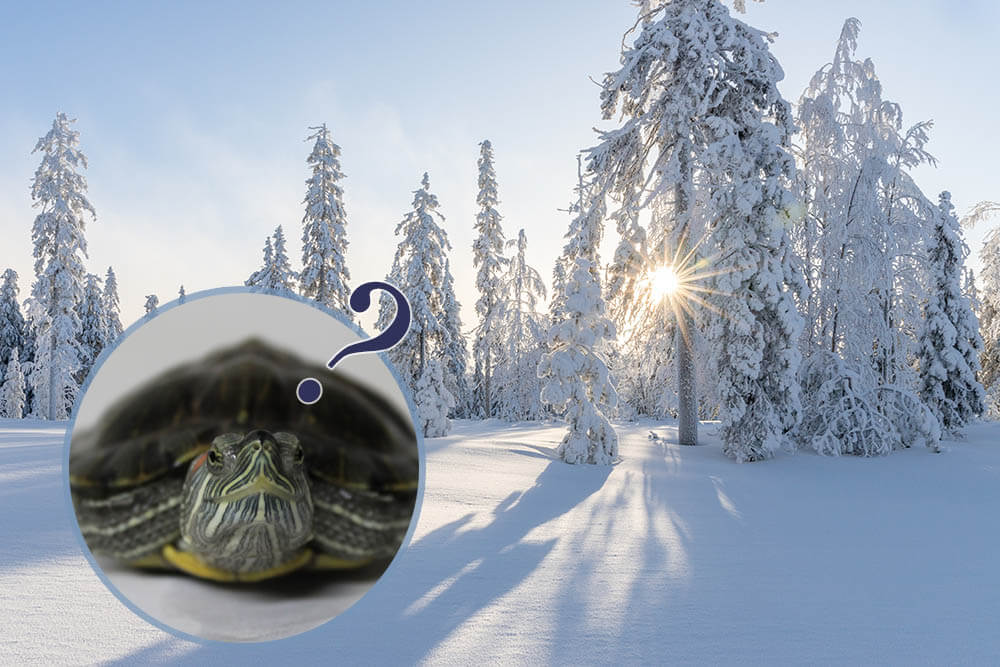
Brumation
In the winter, most freshwater turtles go into brumation.
What is brumation, you ask? Simple: brumation is to reptiles what hibernation is to mammals.
During the winter, mammals go into extended periods of inactivity. Essentially, a mammal enters deep sleep, allowing it to conserve energy so that it can survive those long, freezing months despite eating little. Contrary to popular belief, hibernators don’t stay asleep the entire winter but wake up occasionally to eat and drink.
Brumation is the reptilian version of hibernation.
The turtle is an ectotherm – it depends on the ambient environment for body temperature regulation. This means cold external temperatures can lower the turtle’s internal temperature, so it has to seek shelter lest it loses a dangerous amount of body heat. Thus, it dives deep under a body of water such as a lake, then burrows into the mud at the bottom. This allows it to stay warm and safe.
During brumation, the turtle’s heart rate, respiratory rate, body temperature, and activity levels drop, similar to what happens in a mammal when it’s hibernating. Take note that, unlike hibernation, brumation doesn’t require the turtle to sleep.
The turtle remains buried in the mud until the weather grows warmer – which could take months, of course (more on this below). However, the turtle may become temporarily active again on any warm winter day to find food and water.
While some turtles return to the same spot every year to brumate, others will relocate. It isn’t well-understood why a turtle would choose one spot over another.
There’s one problem with all this, however. The turtle isn’t an amphibian. So if it stays underwater when it’s brumating, shouldn’t it drown?
Once again, we have to thank nature for the marvel of biological engineering that is the turtle.
Cloacal respiration
Like us, the turtle breathes air; without air, it will suffocate and die.
So how does a turtle survive being underwater for months during brumation? Through a process called “cloacal respiration,” which is just a fancy way of saying “it breathes through its butt.”
The turtle passes eggs and waste out of an opening in its posterior. This opening also happens to contain many blood vessels capable of absorbing oxygen in the water, thus allowing the exchange of gases necessary for survival.
Fresh air contains far more oxygen than water, however. So wouldn’t a dormant turtle still suffocate?
No, it won’t. This is because during brumation, the turtle only needs a minimal amount of oxygen, making cloacal respiration sufficient to meet its oxygen demand.
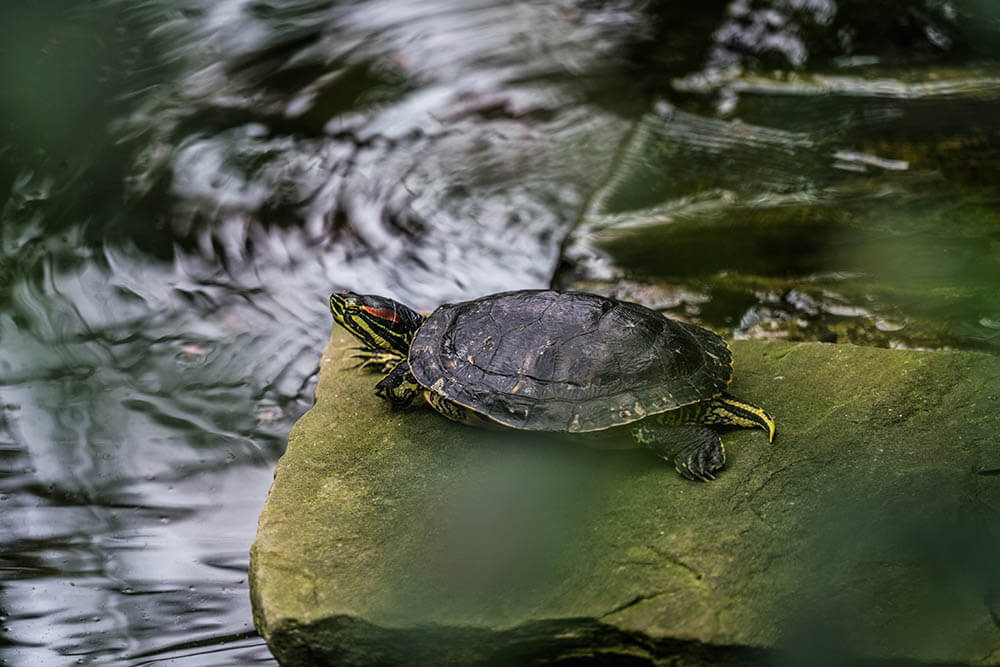
Anaerobic respiration
What if the water doesn’t contain enough oxygen? Would cloacal respiration still work?
No, it wouldn’t. Thankfully, some turtle species can switch from cloacal respiration to another respiration method known as anaerobic respiration. This powers an individual’s metabolism without oxygen.
Unfortunately, anaerobic respiration causes the buildup of a byproduct called lactic acid, which can be deadly in great amounts. Thus, the turtle has to rise to the surface to breathe in oxygen from the air before anaerobic respiration can harm it. If the body of water’s surface freezes over, the turtle could be in serious trouble as it won’t be able to access the fresh, oxygen-rich air above it.
Brumation duration
How long does a turtle brumate? It depends on how cold the water is. Therefore, it also depends on the turtle’s location. One that brumates in a colder region, such as the north, will lie dormant for a longer period than one that’s in a warmer location, such as the south.
The duration also varies per year. As the window between which winter ends and spring begins isn’t the same every year, the length of a turtle’s brumation period is never consistent.
The maximum brumation period is 8 months per year. While many turtles can brumate this long, most don’t need to.
How does a turtle know when it’s time to wake?
As mentioned earlier, brumation doesn’t require a turtle to sleep. Instead, the water’s low temperature significantly slows down its metabolism. The turtle remains conscious, but due to this reduced metabolic rate, it experiences a drastic drop in energy level, which leads to substantial inactivity.
In other words, the turtle doesn’t need to wake up from brumation because it doesn’t sleep during brumation.
When the water temperature starts to rise, so does the turtle’s metabolic rate. This gives it the energy it requires to become more active. On a winter day when the water is warmer than usual, this reptile may therefore move around, though expect it to do so at a reduced pace (this is why we sometimes see turtles swimming around in a lake, river, or pond during winter). Then, when the water cools down once more, the turtle slows down again.
Once spring arrives and the temperature stops falling, the warming water speeds up the turtle’s metabolic rate, allowing it to become active and stay active.
To summarize, it’s not that the turtle knows when it’s time to become active. Instead, the water temperature directly affects its activity level. The colder the weather, the less active the turtle. Consequently, the warmer the weather, the more active it is.
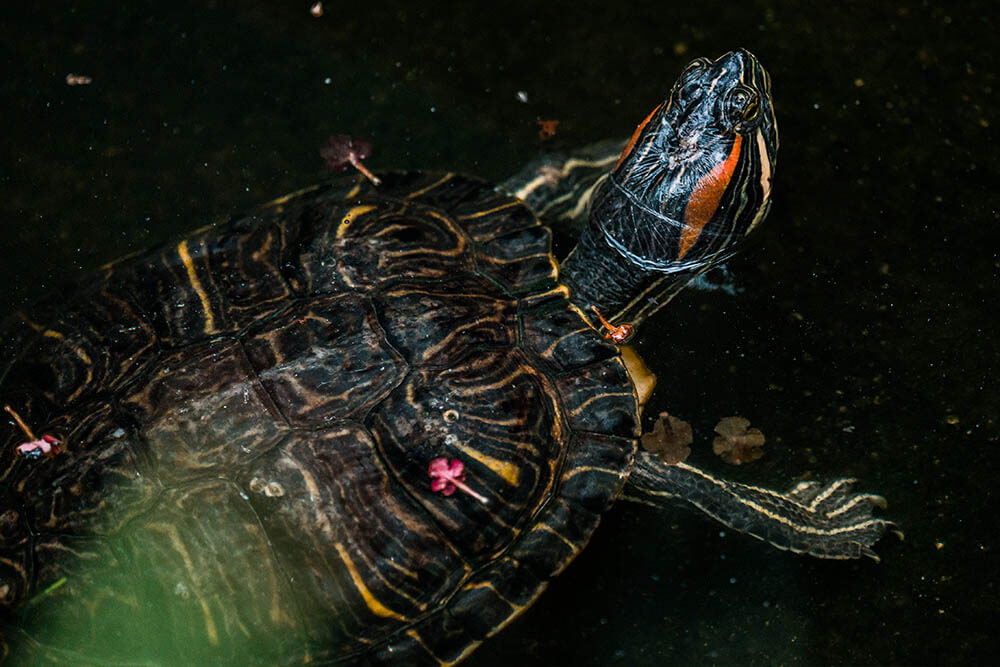
What Happens After Brumation?
Once the weather is warm enough that the turtle doesn’t need to brumate anymore, it digs itself out of the mud and swims upward until it breaks the water’s surface. The turtle then breathes again using its airways and lungs.
A turtle that has just emerged from brumation is typically weak due to its low oxygen levels. Thankfully, the more fresh air it breathes, the stronger it’ll get until it has fully recovered.
If the creature has been surviving through anaerobic respiration, then its body is also full of lactic acid. If you’re wondering what that’s like, think back to the last time you exercised. Didn’t it make your muscles ache? Maybe you even experienced muscle cramps. The experience is similar for a turtle with lots of lactic acid in its body. The turtle’s solution to this issue is to use its shell’s calcium and carbonates to neutralize the toxin.
Upon returning to land after brumation, the turtle then basks in the sunlight. This increases its body temperature and returns its metabolic rate to normal so that it can become active again. It also exposes the turtle’s shell to UV rays, further helping it recover from the effects of lactic acid buildup.
As spring is still relatively cold compared to summer, however, the turtle needs a longer time to warm up after brumation.
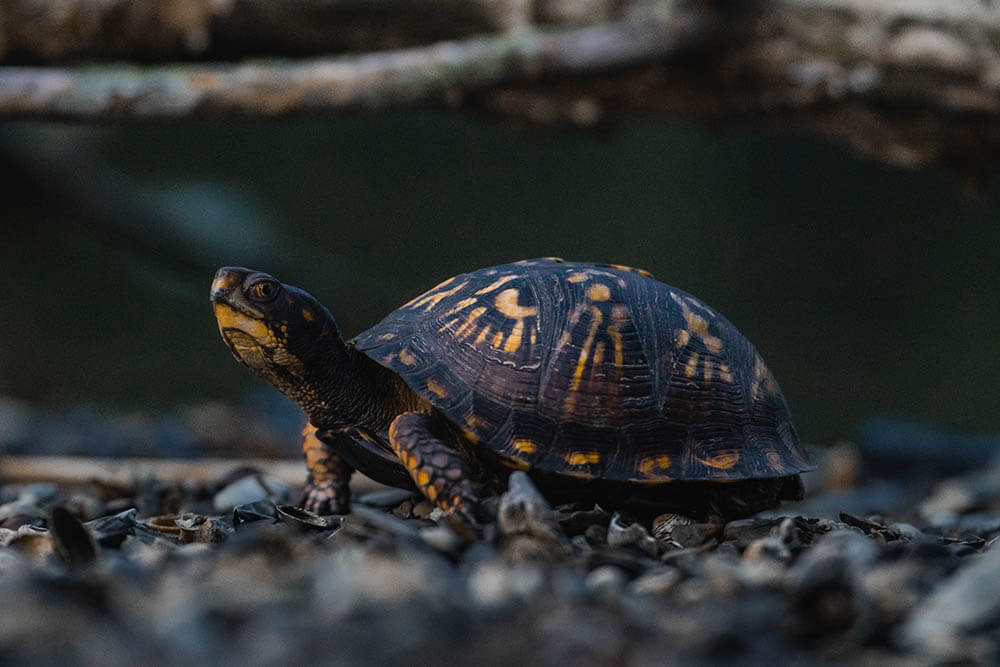
FAQs About What Turtles Do in the Winter
Let’s answer more questions about what turtles do in the winter!
Do all turtles brumate underwater?
Turtles can be found all over the world, and many of them live in warm regions with no winter. Therefore, not all turtles brumate underwater – only those that inhabit environments known for cold weather or that have winter seasons do so.
In addition, not all turtle species stay warm through brumation. The box turtle, for instance, takes advantage of its excellent digging skills to burrow into the ground, where it stays during the winter to avoid death by freezing.
Others crawl under a dense pile of vegetation (such as leaves) or stay inside a small cave or tree hollow. Turtles that think a body of water will freeze are more likely to do this than brumate in the mud at the bottom of said body of water.
What’s the lowest temperature a turtle can survive?
In theory, a turtle can survive any temperature that remains above freezing. When it’s extremely cold, turtles find ways to warm themselves up, generally through brumation. This slows down their metabolism and drastically reduces their energy requirements, permitting them to survive the harsh winter for an extended duration.
What do snapping turtles do in the winter?
Like all other freshwater turtles, many snapping turtles brumate by burrowing under the mud. In some cold regions, hatchlings may use their nest to brumate.
Interestingly enough, not all snappers brumate. This is because they boast a high cold tolerance, making it easier for them to survive the winter and even allowing them to stay active under the ice.
What do tortoises do in the winter?
A tortoise is a type of larger, heavier turtle that lives exclusively on land, which explains why it’s sometimes called a land turtle.
Tortoises therefore don’t nestle in the mud at the bottom of a body of water to brumate during the winter. Instead, they dig a hole in the ground and stay in the resulting burrow. Alternatively, they may stay inside caves, inside hollows, or under piles of leaves.
What do sea turtles do in the winter?
Not all sea turtles brumate. Instead, they migrate to warmer regions the moment they feel the water temperature dropping.
Those that do brumate find a good, safe spot to stay warm, such as the Gulf of Mexico, then bury themselves under several inches of mud.
Does a slower metabolic rate help turtles in any other way?
Yes! A slower metabolic rate also slows down the turtle’s aging. This is a major reason why turtles are so long-lived!
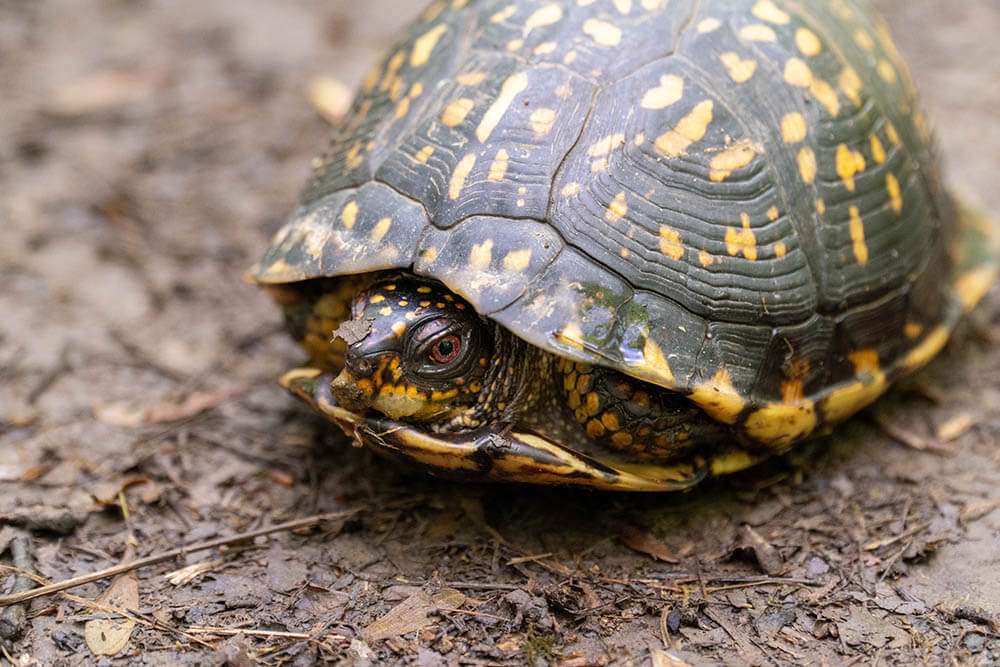
Conclusion
Come winter, turtles brumate – they burrow in the mud at the bottom of a body of water, where they can stay warm and safe.
As the water gets colder, the turtle’s metabolism slows, which reduces its energy requirements. This allows it to survive despite not eating much. It’s able to “breathe” underwater through cloacal respiration, which is the absorption of oxygen in the water with the help of the vessels in its butt. In the absence of oxygen, it can switch to anaerobic respiration.
Once the weather is warmer, the turtle emerges from brumation, swims to the water’s surface, and returns to land. It breathes oxygen-rich air to grow stronger. It also basks in the sunlight to raise its body temperature, which helps it restore its energy levels to normal and recover from the lactic acid buildup in its body.
